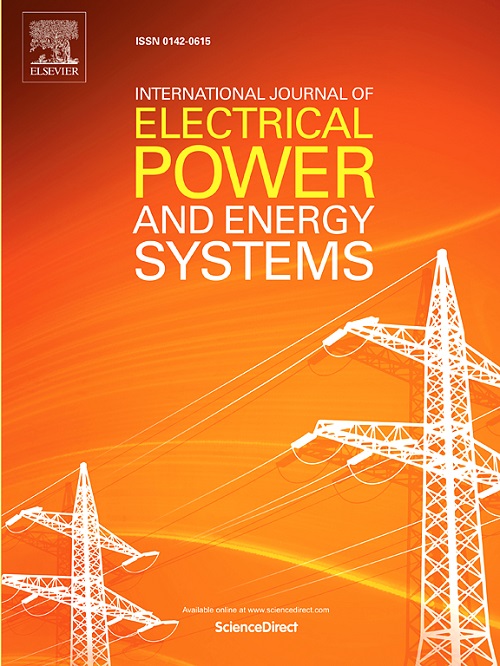考虑电网拓扑变化的过流和距离继电器组自适应协调设置
IF 5
2区 工程技术
Q1 ENGINEERING, ELECTRICAL & ELECTRONIC
International Journal of Electrical Power & Energy Systems
Pub Date : 2025-04-30
DOI:10.1016/j.ijepes.2025.110712
引用次数: 0
摘要
电网拓扑结构的变化,如线路中断,会改变故障电流,可能导致保护继电器之间的不协调。提出了一种利用整定组对过流继电器和距离继电器进行协调的自适应保护方案。该方法采用元启发式优化算法将可能的网络拓扑聚类到设置组中,并确定最优特征曲线,从而根据线路中断调整组设置。在此框架内,线性规划算法解决了计算ocr的最佳时间乘数设置的子问题。线性规划的目标函数旨在防止拓扑过度聚类到有限数量的设置组,解决基于优化的聚类的一个常见限制。仿真结果表明,在所有网络拓扑中采用综合设置要么会导致不协调,要么会显著增加OCR操作时间。相比之下,该方法通过优化特征曲线实现了所有拓扑的完全协调,表现出优于传统方法的性能。在IEEE 8总线和30总线测试系统上进行了测试,与现有方法相比,该方法消除了误协调,显著降低了目标函数值,证实了自适应OCR-DSR协调的有效性。本文章由计算机程序翻译,如有差异,请以英文原文为准。
Setting group-based adaptive coordination of overcurrent and distance relays considering changes in grid topology
Changes in electric network topology, such as line outages, alter fault currents, potentially causing mis-coordination among protective relays. This paper presents an adaptive protection scheme for coordinating overcurrent relays (OCRs) and distance relays (DSRs) using setting groups. The proposed method adjusts group settings in response to line outages, employing a metaheuristic optimization algorithm to cluster possible network topologies into setting groups and determine optimal characteristic curves. Nested within this framework, linear programming algorithm solves a sub-problem to compute optimal time multiplier settings for OCRs. The objective function of the linear programming is designed to prevent the excessive clustering of topologies into a limited number of setting groups, addressing a common limitation of optimization-based clustering. Simulation results indicate that employing comprehensive settings across all network topologies either results in mis-coordination or significantly increases OCR operating times. In contrast, the proposed method achieves complete coordination across all topologies by optimizing characteristic curves, demonstrating superior performance over conventional approaches. Evaluated on the IEEE 8-bus and 30-bus test systems, this approach eliminates mis-coordination and markedly reduces the objective function value compared to existing methods, confirming its effectiveness for adaptive OCR-DSR coordination.
求助全文
通过发布文献求助,成功后即可免费获取论文全文。
去求助
来源期刊
CiteScore
12.10
自引率
17.30%
发文量
1022
审稿时长
51 days
期刊介绍:
The journal covers theoretical developments in electrical power and energy systems and their applications. The coverage embraces: generation and network planning; reliability; long and short term operation; expert systems; neural networks; object oriented systems; system control centres; database and information systems; stock and parameter estimation; system security and adequacy; network theory, modelling and computation; small and large system dynamics; dynamic model identification; on-line control including load and switching control; protection; distribution systems; energy economics; impact of non-conventional systems; and man-machine interfaces.
As well as original research papers, the journal publishes short contributions, book reviews and conference reports. All papers are peer-reviewed by at least two referees.

 求助内容:
求助内容: 应助结果提醒方式:
应助结果提醒方式:


